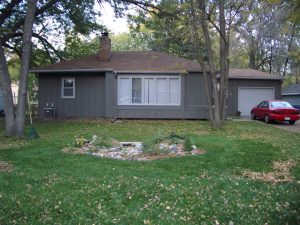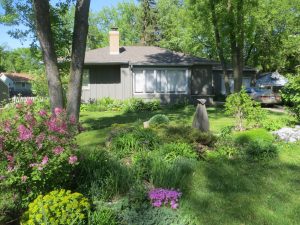
While it is impossible to quantify what kind of return on investment a particular property will get, there is little doubt that when it comes to selling your home, curb appeal matters. If nothing else, a well-presented surrounding will encourage prospective home buyers to follow up. They might simply look out the window and keep driving if the land appears to be boring or poorly maintained.
THE MINIMUM INVESTMENT
Preparing a home for sale can be hard on the budget, but making a property look well-kept doesn’t cost an arm and a leg. Keeping the lawn mown and fertilized and the gardens free of leaves and dead plant material are things that most everyone can manage. Getting rid of weeds is worthwhile, since a weedy garden or lawn suggests both a poorly maintained property and one that is high-maintenance from the outset. If the season is right, plant some colorful annuals as soon as you decide to sell, so they have time to get established and grow. Edge the sidewalks and driveway and prune any overgrown shrubs to present a neat and tidy appearance. Refreshing your mulch makes a big visual impact, and don’t forget to make sure the edges are well-defined.
How about bigger projects? Are they worth the investment? The general consensus among realtors and researchers is an enthusiastic but conditional “Yes!” And what are the conditions?
– Make the landscaping fit the architecture of the home. An untamed wildflower garden may be a good fit with an old farmhouse, but look out-of-place in front of a modern structure with lots of clean lines and 90-degree angles.
– Don’t make it look too high-maintenance. Not everyone has the time to tend extensive beds of annuals and perennials or lots of topiary, however lovely they are.
– Plan ahead. For enthusiastic gardeners like me, it’s easy to simply keep digging up lawn in search of sunny spots for one’s latest plant purchases. Unfortunately this can lead to a chaotic look that neither looks balanced as a whole nor fits the home design. Be aware that someday you may sell the home, and mindful that even though it may be satisfying to you to stick in the newest cultivar wherever there is suitable space, placing it wisely to begin with will save having to do extensive transplanting when it comes time to put in on the market.
THINK LONG TERM
Of course, landscaping goes beyond what one grows to include things like paths, patios, ponds and pavillions. While installation of such things can be costly overall, one needn’t do it all at once. You could have a 5- or 10-year plan, gradually adding features that will help make the property pleasing, practical and profitable. You can think of it in terms of adding exterior living space. While it may seem like an extravagance, getting the advice of a landscape architect can be a worthwhile investment. He or she can tell you what kinds of things are valued by homebuyers in a particular market and neighborhood, and how to add them in a way that makes the most of the style and space you already have.
What would such a blog post be without a few before-and-after photos? These are from my own home (one I’m not selling anytime soon; please disregard the weedy lawn and other maintenance issues!). When I bought it, it was a blank slate with a wet basement. The first thing I did was regrade and dig a dry well in the front yard that became the focal garden, which I kept extending over the years. Part of it is berm to add a little topography to the otherwise dead flat lot; it also helps with drainage in the dense clay soil. Looks a tad better, I hope!
~ Kristi


